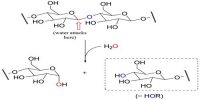Molecular orbital theory was put forward by Hund and Mullikan in 1932. This theory is modern and more rational. This theory assume that in molecules, atomic orbitals lose their identity and the electrons in molecules are present in new orbitals called molecular orbitals.
A brief outline of this theory is given below:
(i) In a molecule, electrons are present in new orbitals called molecular orbitals.
(ii) Molecular orbitals are formed by combination of atomic orbitals of equal energies (in case of homonuclear molecules) or of comparable energies (in case of heteronuclear molecules).
(iii) The number of molecular orbitals formed is equal to the number of atomic orbitals undergoing combination.
(iv) Two atomic orbitals can combine to form two molecular orbitals. One of these two molecular orbitals one has a lower energy and the other has a higher energy. The molecular orbital with lower energy is called bonding molecular orbital and the other with higher energy is called anti bonding molecular orbital.
(v) The shapes of molecular orbitals depend upon the shapes of combining atomic orbitals.
(vi) The bonding molecular orbitals are represented by σ (sigma), π (pi), δ (delta) and the antibonding molecular orbitals are represented by σ∗, π∗, δ*.
(vii) The molecular orbitals are filled in the increasing order of their energies, starting with orbital of least energy. (Aufbau principle).
(viii) A molecular orbital can accommodate only two electrons and these two electrons must have opposite spins. (Paul’s exclusion principle).
(ix) While filling molecular orbitals of equal energy, pairing of electrons does not take place until all such molecular orbitals are singly filled with electrons having parallel spins. (Hund’s rule).














